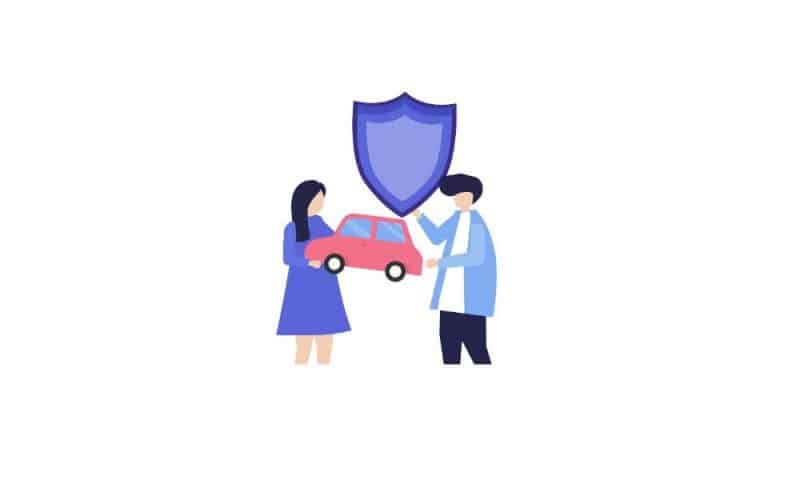Third-party insurance is a policy purchased by the insured (first party) from the insurance company (second party) for protection against the claims of another (third party). A common example of third-party insurance is car insurance, which is designed to protect you against the claims of other drivers in case of an accident.
The third-party car insurance policy is the bare minimum insurance cover that is a must for every car. It protects the interest of third parties if they suffer any financial losses due to the car.
Understanding Third-Party Insurance
A third-party car insurance plan is one that covers the legal liability that you face in the case of third-party losses. In case your car causes damage to the third-party vehicle, personal property, and physical injury, one might be held responsible for the financial loss that the individual suffers.
It is a type of plan that covers these financial losses and compensates the third party on your behalf.
Third-party insurance is essentially a form of liability insurance. The first party is responsible for their damages or losses, regardless of the cause of those damages. One of the most common types is third-party insurance is automobile insurance.
Third-party offers coverage against claims of damages and losses incurred by a driver who is not the insured, the principal, and is therefore not covered under the insurance policy. The driver who caused the damages is the third party.
For auto insurance, there are two types of third-party liability coverage:
- Bodily injury liability: Covers costs resulting from injuries to a person, such as hospital care, lost wages, or pain and suffering due to an accident
- Property damage liability: Covers costs resulting from damages to or loss of property, such as replacing landscaping and mailboxes, or compensation for loss of use of a structure.
In some cases, third-party insurance may be required by law. Drivers, for example, must carry at least a minimal amount of bodily injury liability and property damage liability coverage. These coverage requirements vary from state to state. A few states do not require both or have other limitations. Each state sets its minimum requirement for each type of coverage.
Even in “no-fault” states, liability coverage is all but essential. No-fault laws do not protect you from million-dollar injury lawsuits stemming from seriously injured third parties.
How does Third-Party Insurance Work?
In general, third-party coverage is broken down into two categories: bodily injury liability and property damage liability.
In an at-fault state, bodily injury will reimburse (or pay directly) any medical costs related to injuries to other drivers or passengers in an accident. For example, say you get into a car wreck that is your fault, and the other driver must go to the hospital for their injuries. Your car insurance will cover that person’s medical bills up to the coverage limit provided.
This coverage may also reimburse the injured driver for any wages that are lost and provide restitution for pain and suffering.
The other element of third-party insurance in a tort auto policy covers damage to the other vehicle. If you totaled the other driver’s car in the accident named above, your auto insurance policy will pay to replace the car under your property damage coverage. It also can pay for repairs if the car can be fixed and rectify any other type of property damage, such as to a home. If you lose control of your car and end up crashing it through the front window of someone’s home, your auto insurance policy will cover the cost of reconstruction up to the coverage limit.
In no-fault states, drivers typically go back to their own individual policies to claim medical coverage under Personal Injury Protection (PIP), no matter who is deemed at fault. Third-party claims involving bodily injury are typically reserved for large and serious medical claims that result in pain and suffering losses (the criteria varies by state), and property damage coverage generally applies to a driver causing damage to someone else’s property like a mailbox or fence.
It may also apply to damage to the third party’s vehicle, depending on the state.
Who are the parties in Third-Party insurance?
For an insurance policy, the first party is the person or business that purchases the insurance (the insured). The second party is the company providing the insurance (the insurer). A third party is some outside person or business that makes a claim for damages from the first party.
What doesn’t Third-Party Insurance cover?
What third-party insurance doesn’t cover can depend on the specific policy type, but in general, this type of insurance doesn’t cover deliberate acts of destruction or injury on the part of the insured. It also doesn’t cover criminal actions.
Features of Third-party car insurance policy
Some of the salient features of third-party coverage are as follows –
- The cover is mandatory. If you are caught without a valid cover, you face legal complications that include fines, penalties and even imprisonment in extreme situations.
- If you buy a new car, the third-party coverage should be bought for a continuous period of three years. This long-term coverage is also mandatory
- In the case of older cars, however, only annual coverage is available
- The premium of the third-party car insurance coverage is fixed by the Insurance Regulatory and Development Authority of India (IRDAI). It depends on the cubic capacity of the car
- The premium is fixed across all insurance companies
- The IRDAI reviews the premium every year and might change the rates if required.
Coverage Under Third-party Car Insurance
A third-party car insurance plan covers financial liabilities arising when your car causes any of the following losses –
- Death of a third party
- Physical injury caused to a third party
- Third-party property damage
In any of these instances, if you suffer a financial liability, the policy would cover the liability and pay the compensation. However, if your car suffers any damage or loss and you suffer a financial loss, such a loss would not be covered by the policy.
Here are some instances to understand the coverage –
| Instance | Type of loss | Third-party coverage |
|---|---|---|
| An accident involving your car where an individual dies | Death of the third party | Coverage available |
| You hit an individual with your car and the individual suffers a fracture | The third party suffers a physical injury | Coverage available |
| Your car hits another car | Your car and the other car are both damaged | Coverage is available for the damage caused to another car. However, no coverage is available for your car’s damage. |
| Your car is stolen | Theft of your car | Coverage is not available |
In the third and fourth instances, your car also suffers damage. However, a third-party car insurance policy does not cover such losses. If you seek coverage for the same, a comprehensive car insurance policy is recommended.
The extent of coverage
In the case of death or physical injuries, third-party car insurance plans do not limit the extent of coverage. In other words, the coverage is unlimited. The policy would pay the compensation amount that the Motor Accidents Claim Tribunal (MACT) dictates.
In the case of property damage, however, the coverage amount is limited to a maximum of INR 7.5 lakh. If the claim is more than this, the excess would form your out-of-pocket expense.
Exclusions
Under the third-party car insurance plan, claims that occur due to the following instances are not covered –
- Driving without a valid license
- Driving under the influence of alcohol and/or drugs
- Driving outside the boundaries of India
- Participating in criminal acts or acts of a hazardous nature
How much does Third-Party insurance cost?
The cost of third-party insurance is often lumped in with other types of insurance protection under one policy, such as an auto, homeowners, or business owner’s policy (BOP). Even if you obtain a stand-alone third-party insurance policy, like an umbrella policy or a general liability (GL) policy, premiums can depend on factors like what types of losses are covered, who the insured is, and what types of risk they pose, and past claims history.
In general, the more coverage you buy, the higher the cost of the premium. But this cost can be well worth the money if you get involved in a serious accident or lawsuit where you are found to be at least partially liable. Some people carry very low levels of third-party insurance and pay the price when they incur a claim that substantially exceeds the limits of their coverage.
Premiums for Third-party Car Insurance
This depends on the following factors -.
- The cubic capacity of the car
- The type of car – private cars or commercial ones
- The term of the policy – annual premium or three-year long-term premium
- The variant of the car – fuel-powered car or electric cars
- The discounts available
How to buy Third-Party Insurance
This type of insurance coverage is usually included in most homeowners and auto insurance policies, and businesses can obtain coverage through a business owner’s policy (BOP) or a commercial package policy (CPP).
Third-party insurance can also be sold by itself as an umbrella policy, a general liability (GL) policy, or a professional liability policy, depending on the insured and their needs.
Speak with an insurance agent, broker, or company to determine what type of coverage is right for you.
Third-party car insurance claim process
If you suffer a third-party claim, the process for the same is as follows –
- Inform your insurance company immediately and register your claim
- File a police FIR detailing the claim. Also, retain a copy of the FIR as it would be required when you file a claim with your insurance company.
- The claim would be taken to the Motor Accidents Claim Tribunal (MACT). The Tribunal would pass the judgment on the amount of claim that you have to pay to the third party for causing the financial loss.
- Once the MACT passes its judgment, inform your insurance company and file your third-party claim
- The insurance company would then compensate the third party on your behalf.
For filing a third-party claim, submit the following documents to the insurance company –
- The claim form, filled and signed
- Copy of your insurance policy
- Copy of the police FIR
- Copy of your driving license
- Copy of your identity proof
- Any other police reports, if any
Benefits of Third-party Car Insurance
A third-party coverage on your car is beneficial for the following reasons –
- You can avoid legal fines and penalties since the cover fulfills the requirements of the Motor Vehicles Act of 1988
- It provides protection against suspension of your driving licence
- The premiums are affordable and the same across insurers
- Third-party car insurance provides legal protection from time-consuming legal hassles
You get financial security knowing that any third-party claim would be handled by the policy
Is Third-party Car Insurance Enough?
If you look from a legal point of view, the third-party car insurance policy is sufficient in taking care of the Motor Vehicles Act’s requirements. If you have the coverage, you can avoid legal complications. However, when you look from the coverage point of view, the third-party policy is definitely lacking. The policy does not cover the damages that your car might suffer due to natural or man-made disasters.
Moreover, if the car is stolen, you would get no compensation for the loss incurred.
That is why a comprehensive car insurance policy is recommended for a wider scope of coverage. The comprehensive policy covers the mandatory third-party legal liability and also extends coverage to the damages that your car might suffer. As such, you get compensated even when your car is damaged or stolen.
In addition, with the optional add-on coverage benefits, you can add further layers of protection and get 360-degree coverage.
Who needs Third-Party car insurance?
In some instances, third-party insurance is legally required. Drivers in most states need to have at least a minimal amount of third-party insurance. If you own more assets and drive a nicer car, then more coverage (i.e., higher limits) may be advisable.
Some businesses may also be required to carry third-party insurance to meet state or federal regulations.
Recommended Articles
- Sports Car Insurance: Coverage, Cost & All To Know
- Car Insurance Renewal: How Does It Work?
- Electric Car Insurance: How Does It Work?
- Liability or Full-Coverage Car Insurance: Which Is Better?
- Best Car Insurance for New Drivers
- Plymouth Rock Car Insurance Review 2023






